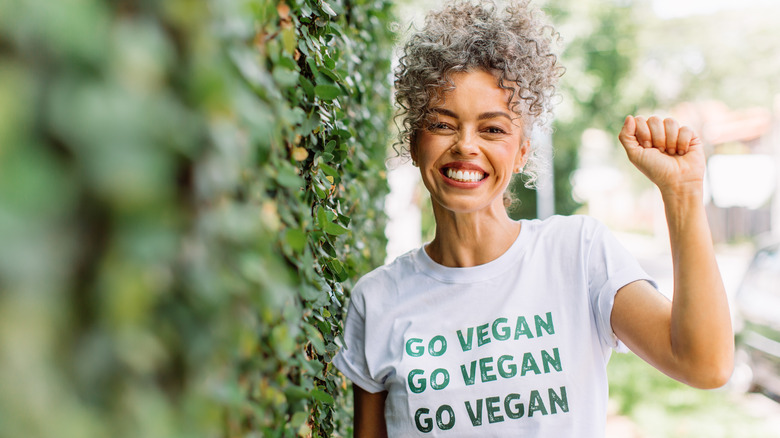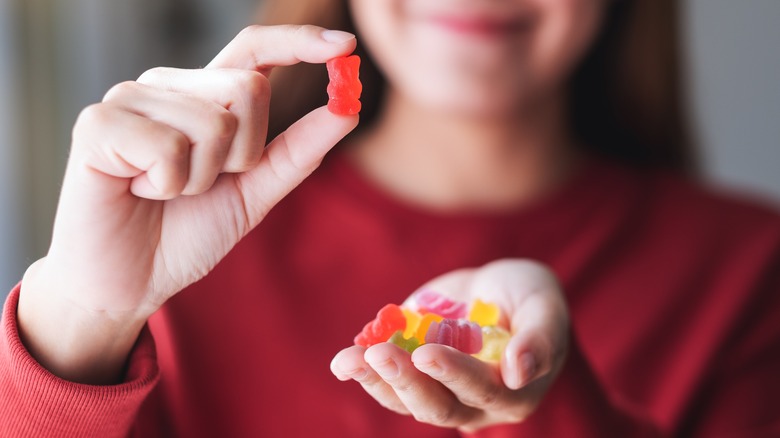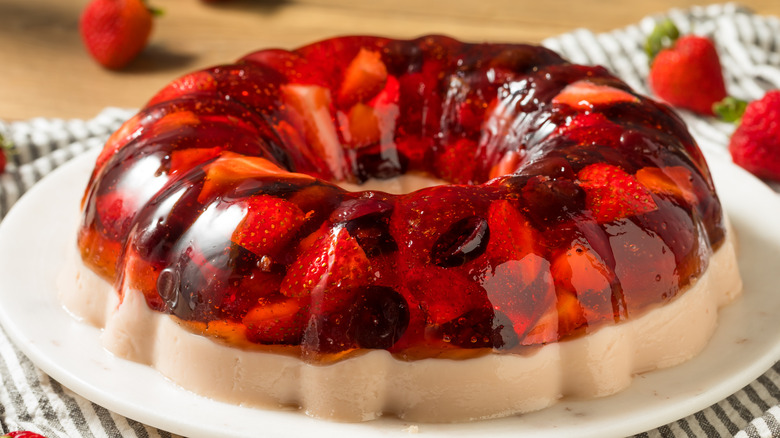Why You Need To Watch Out For Gelatin As An Ingredient If You're Vegan
Used for decades in cooking and baking, gelatin may sound innocent enough. However, whether you're an experienced vegan or have just become one, it's important to know the significance of the ingredient and where it comes from.
Gelatin is created from various parts of cows and pigs, namely the skin, bones, and connective tissue (via Food & Living Vegan). Though its origins sound very unappealing, gelatin is a common thickening agent. It can even be found as a separate ingredient in most grocery stores, though this is usually for baking purposes to bring ingredients together (via King Arthur Baking).
As it is often used in baking and cooking, vegans should always check what they're eating when they're out or at someone's house for dinner. Some people may not even realize the origins of gelatin and do not disclose it as an animal byproduct. To prevent any trouble later on, it's always best to check exactly what you're eating. Remember, if a dessert looks particularly shiny, it probably has gelatin in it.
Gelatin can be found in many everyday food items, so it's best to check
It isn't just vegans who should avoid this ingredient, though. Vegetarians who don't like to consume any part of meat or fish should also avoid gelatin due to its connection to animals. Gelatin can be tricky to avoid, as it is used in many popular and common sweets and dishes. You might not have known Oreos and other popular foods are actually vegan, so you could be accidentally ingesting foods with gelatin in without knowing.
You're most likely to see gelatin on the ingredients list of any chewy and soft sweet like gummy bears — i.e. brands like Haribo (via Livekindly). Some other foods you'll always want to check the ingredient list of are frosting (either alone or on cupcakes), marshmallows, yoghurt, and ice cream (per Live Strong).
Though there are many vegan alternatives to the above, gelatin can still slip through the cracks of food you think is vegan like wafers or even fruit snacks. Gelatin isn't necessarily bad for you, but if you avoid all animal products you should be vigilant when checking for gelatin.
Gelatin can be found in non-food products too
According to PETA, gelatin isn't just a food ingredient. In fact, it can be found in beauty and hair products like shampoo and face masks. It is also sometimes used in photographic film, though you'll only need to look out for this one if you're a super strict vegan as you're not ingesting the gelatin or putting it on your skin.
Another key product you'll need to really check the ingredients list of is vitamins, particularly the ones in capsule form. These vitamins often have gelatin as a coating for the outside of a tablet to help you swallow it more easily. Unlike how collagen contains animal byproducts and cannot be vegan by nature, you can luckily purchase separate vitamins that are made with a fully vegan recipe.
Finally, if you're a wine connoisseur, you may be startled to learn some wines contain gelatin. This is due to a process called "clearing," which prevents a cloudy appearance when you're pouring out a glass and helps to settle any remaining sediment (via WineMaker). This varies from bottle to bottle, so a simple ingredient checklist should prevent any mishaps.
Now you know what gelatin is, next time you're tempted to reach for those colorful gummies at the grocery store you should take another look at the ingredients to make sure what you're buying is actually vegan.


